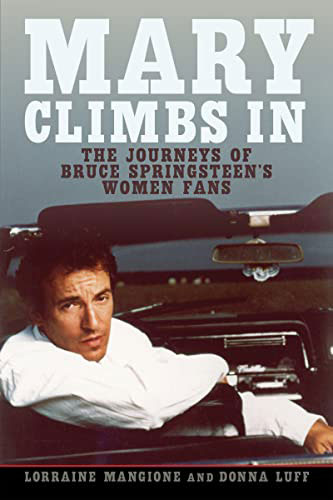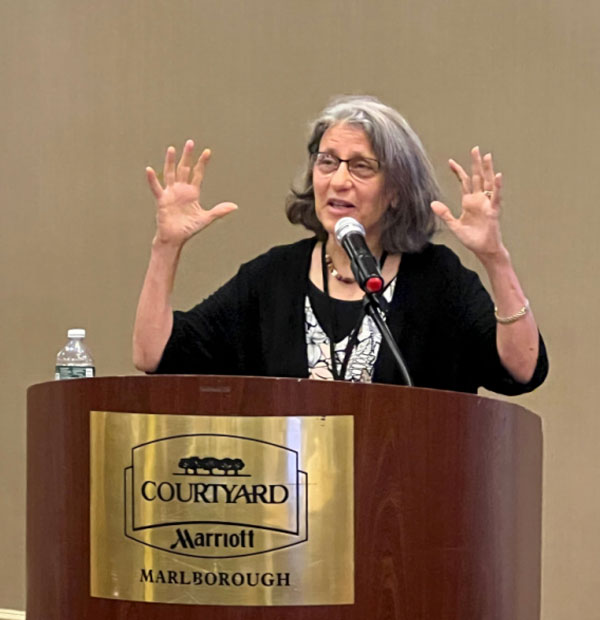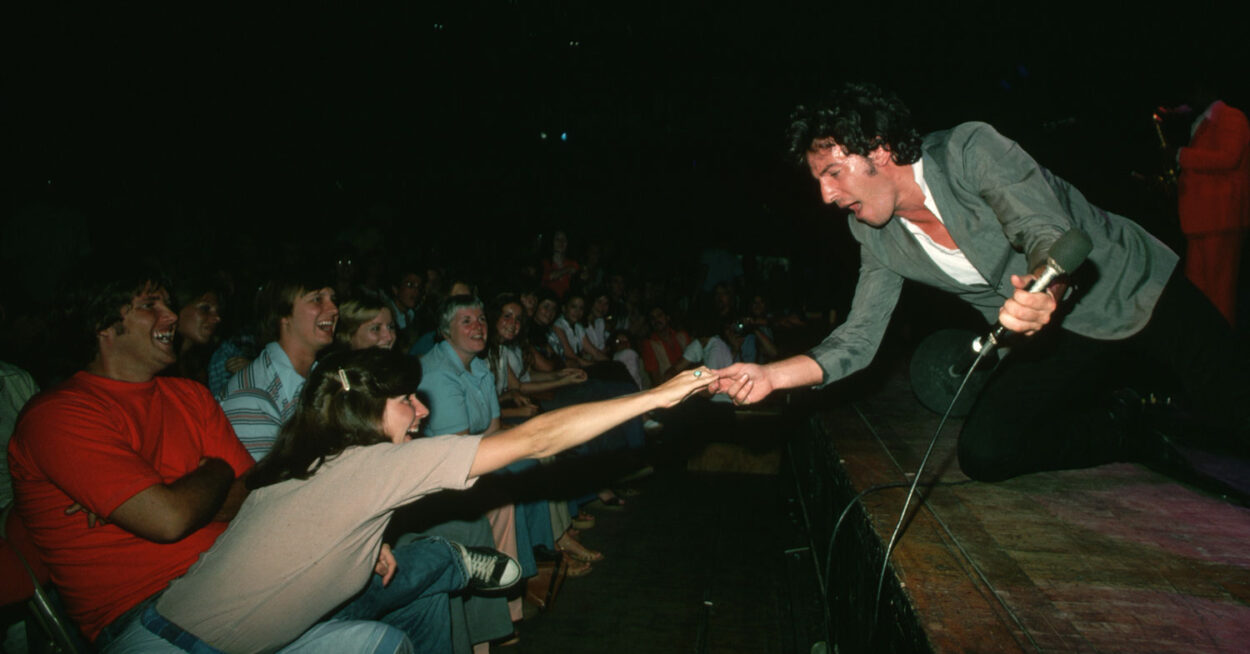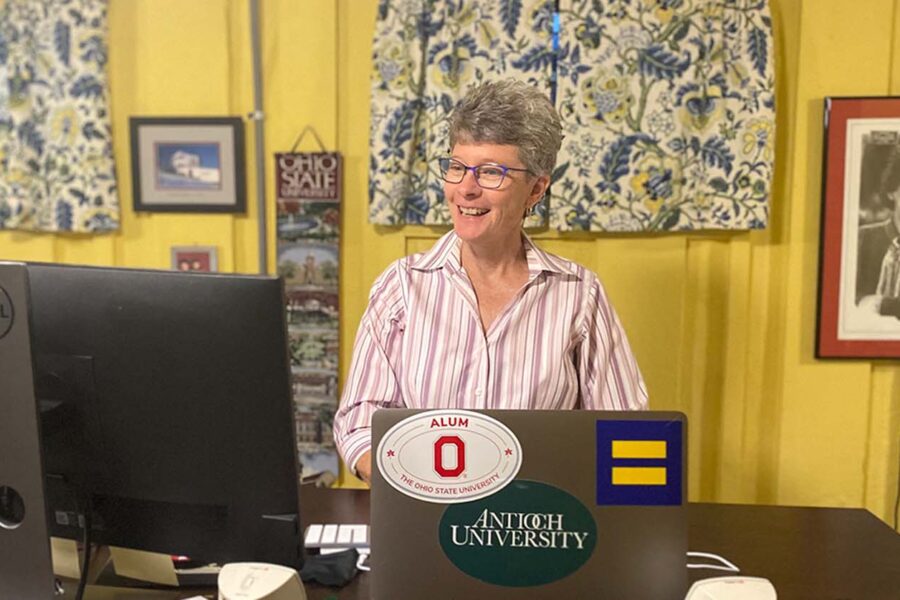From Beatlemania to the BTS Army, musical fandom has long included girls and women—and for just as long, there’s been a stereotype of female fans as full of lust for the male objects of their obsession. But is this a fair description? And how should we understand older female fans, the ones who have been a fan for decades?

These are some of the questions that Lorraine Mangione, Professor of Clinical Psychology at Antioch University New England, seeks to address in her new book with co-author Donna Luff, Mary Climbs In: The Journeys of Bruce Springsteen’s Women Fans. As she explains, the stereotype is that, as fans, “We’re only romantically interested or attracted to the good-looking guy. And we felt like for us there was more to it, and for other women, there was probably more to it.” That’s why they undertook the study that forms the backbone of this book, a project that involved surveying almost 2,000 female Bruce Springsteen fans. As Mangione puts it, they want to understand, “What is it that they’re thinking and feeling when they’re going crazy for Bruce.”
A Long-Standing Love of “The Boss”
Mangione has been a Springsteen fan since the late ‘70s, and she has long brought this interest into her scholarship. Over a decade ago, she gave a presentation titled “Psychological Theories of Grieving, Italian American Culture, and Springsteen’s Work” at a symposium devoted to scholarship surrounding his work. In a Common Thread article published at that time, Mangione spoke about her admiration of Bruce Springsteen: “I think his appeal is that he writes about some very deep and meaningful themes and experiences, often touching on the sadness and ‘underside’ of life and relationships, at the same time that he fully celebrates the joy and exuberance of life, love, friendship, and community.”
Her obsession really catalyzed with Springsteen’s 1975 album Born to Run, which shares an interest in digging into dark matter and the struggle of real people as his first two albums but combines that with a high energy that suggests a readiness to run free. This appealed to her not just as a music listener but also as a budding psychologist—this mindset resonated with her.
Decades later, she is still fascinated with Springsteen’s music. But she’s not drawn to be a devoted historian or critic of the musician himself—instead, she has become more curious about her fellow fans. What does she share with the people she meets at his concerts? And what makes someone follow a musician for decade upon decade?
Generating Data on Under-Studied Populations
To answer some of these questions, Mangione and her co-author Luff conducted two surveys of female fans. Their intent was to find out, explains Mangione, “how we and they talk about their life journeys, growth, development, and challenges.” It’s a question that nobody else seemed to be asking.
They conducted preliminary interviews with a handful of female Springsteen fans, and eventually, they created two separate surveys. These surveys were distributed in fan communities, and they received an unusually high number of responses. As Mangione explains, “There were about 1,100 responses from the first survey and about 700 from the second, which is pretty amazing for both of them!”
This effort to research and understand an under-studied population runs through Mangione’s work. A long-time Clinical Psychologist, she has studied group dynamics and group therapy, and she has a longstanding interest in studying women and the societal roles they perceive themselves in post-career, as well as the dynamics that someone carries in the midst of grief and loss. Mangione is an Italian American, and she has written extensively about the mental health of this ethnic identity in the U.S. Most notably, she wrote, with co-author Donna DiCello, Daughters, Dads, and the Path through Grief: Tales from Italian America.
For Mangione, it’s natural to follow her own interests and think about them using the tools and insights of psychology. “In general,” she says, “I like to look at everyday things and apply psychology to them. Things I’ve been obsessed with, if I can say that. I take them and look at them psychologically. I don’t like to separate the real world and psychology.” Part of not separating these worlds is to see the arts as a big part of the real world. Another major concern is women’s careers. As she says, “We should be bringing general psychology to all of that.”
When it comes to Bruce Springsteen’s fans, Mangione sees how they’re using his music to work out their own psychology. She explains, “There are women in our book, especially in chapter six, that have said, ‘Bruce saved my life. He helped me through a difficult time. Bruce helped me when my mother died.’”
This illustrates the ways that the arts can play important roles in our lives—and in our minds. As Mangione says, “To connect them to psychology is even more important.”
Of course, the book also serves another purpose: to quiet anyone who doubted the sincerity of her Springsteen obsession. “Now everyone who thought I was just a regular fanatic Bruce fan will know I am a super-fanatic Bruce fan,” she says. She imagines someone asking her, “Research? Really?” Her response: “Yeah.”
Making an Impact In Her Community

Mary Climbs In: The Journeys of Bruce Springsteen’s Women Fans has found a warm welcome among fellow fans of “The Boss,” and it has also found recognition in more literary venues. A Publisher’s Weekly review describes the book as “A welcome intervention in a field that often casts rock and roll as an overwhelmingly male cultural domain,” with the author saying that “Springsteen devotees and those interested in the sociology of rock fandom will find worthy insights here.” Meanwhile, the Boston Globe interviewed Mangione and Luff for a deep dive into the book, its context, and what they found.
For Mangione, this is rewarding—and she strives to share credit with her co-author and the team of now-graduated Antioch students behind the book. “The research could never have been done without the excellent help and incredible knowledge of former research assistants Kate Evarts and Larissa Grundmanis,” she says. “Thank you to both of you and to Antioch for such great students!”
She adds that there is also an even broader collection of Antiochian colleagues who have supported her Springsteen fandom. For them, she has a message: “To all the students, current and graduated, who send me Bruce stuff they find—please don’t stop.”



